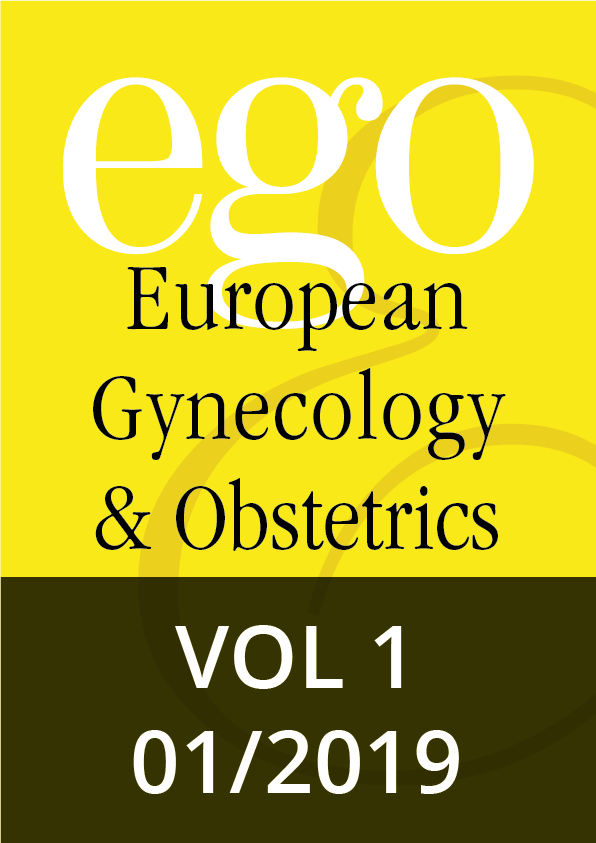In memoriam, 002–002
Editorial, 003–003 | DOI: 10.53260/ego.191011
Reviews, 005–009 | DOI: 10.53260/ego.191012
Reviews, 010–017 | DOI: 10.53260/ego.191013
Reviews, 018–023 | DOI: 10.53260/ego.191014
Case reports, 024–026 | DOI: 10.53260/ego.191015
Case reports, 027–028 | DOI: 10.53260/ego.191016
Original articles, 029–033 | DOI: 10.53260/ego.191017
Original articles, 034–038 | DOI: 10.53260/ego.191018
Original articles, 039–042 | DOI: 10.53260/ego.191019
Original articles, 043–047 | DOI: 10.53260/ego.1910110
Original articles, 048–050 | DOI: 10.53260/ego.1910111
Original articles, 051–054 | DOI: 10.53260/ego.1910112
Original articles, 055–060 | DOI: 10.53260/ego.1910113
Bone density and body weight is associated with MTHFR677 polymorphism in girls with anorexia nervosa
Original articles, 061–064 | DOI: 10.53260/ego.1910114
Modulatory role of D-chiro-inositol and alpha lipoic acid combination on hormonal and metabolic parameters of overweight/obese PCOS patients
Abstract
Context: Polycystic ovary syndrome (PCOS) is a frequent disease characterized by several endocrine impairments and frequent metabolic abnormality, i.e. compensatory hyperinsulinemia.
Aims: To evaluate the improvements induced by a daily treatment with a combination of d-chiro-inositol (DCI) (500 mg) and alpha-lipoic acid (ALA) (300 mg) for 12 weeks.
Setting: retrospective study
Design: Thirty overweight/obese patients were evaluated. The presence/absence of first-degree diabetic relatives was ascertained. Patients were administered DCI (500mg/day) and ALA (300 mg/day) per os for at least 12 weeks. Only patients completing 12 weeks of treatment (n=30) were included in the study. Patients were evaluated before and after the treatment through measurement of plasma levels of LH (Luteinizing Hormone), FSH (Follicle Stimulating Hormone), estradiol, progesterone, androstenedione, testosterone, insulin, glutamic oxaloacetic transaminase (GOT), and glutamic pyruvic transaminase (GPT). They also underwent an oral glucose tolerance test (OGTT) to evaluate glucose, insulin and c-peptide responses.
Results: The combination treatment improved hormonal and metabolic parameters, as well as insulin and c-peptide responses to OGTT and the HOMA index. On subdividing the patients by presence/absence of familial diabetes, DCI+ALA was found to be more effective, both on metabolic and on hormonal parameters, in PCOS subjects with familial diabetes. PCOS patients with familial diabetes had higher baseline GOT and GPT levels than those with no familial diabetes and the combination treatment significantly reduced these levels. Conclusions DCI+ALA proved to be an efficient combination that improved insulin sensitivity and hormonal and metabolic profiles in overweight/obese PCOS patients, especially those with familial diabetes, in whom it reduced the GOT and GPT levels. This latter effect might reduce the risk of non-alcoholic fatty liver disease (NAFLD), typical of PCOS patients.
Keywords: alpha lipoic acid., anovulation, d-chiro inositol, insulin resistance, NAFLD, PCOS
Citation: D. Genazzani A.,Prati A.,Simoncini T.,Napolitano A., Modulatory role of D-chiro-inositol and alpha lipoic acid combination on hormonal and metabolic parameters of overweight/obese PCOS patients, EGO European Gynecology and Obstetrics (2019); 2019/01:029–033 doi: 10.53260/ego.191017
Published: September 2, 2019
ISSUE 2019/01

In memoriam, 002–002
Editorial, 003–003 | DOI: 10.53260/ego.191011
Reviews, 005–009 | DOI: 10.53260/ego.191012
Reviews, 010–017 | DOI: 10.53260/ego.191013
Reviews, 018–023 | DOI: 10.53260/ego.191014
Case reports, 024–026 | DOI: 10.53260/ego.191015
Case reports, 027–028 | DOI: 10.53260/ego.191016
Original articles, 029–033 | DOI: 10.53260/ego.191017
Original articles, 034–038 | DOI: 10.53260/ego.191018
Original articles, 039–042 | DOI: 10.53260/ego.191019
Original articles, 043–047 | DOI: 10.53260/ego.1910110
Original articles, 048–050 | DOI: 10.53260/ego.1910111
Original articles, 051–054 | DOI: 10.53260/ego.1910112
Original articles, 055–060 | DOI: 10.53260/ego.1910113
Bone density and body weight is associated with MTHFR677 polymorphism in girls with anorexia nervosa
Original articles, 061–064 | DOI: 10.53260/ego.1910114
